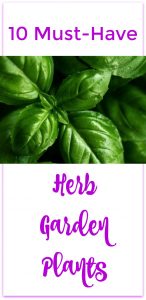An herb garden is one of the greatest gifts that you can give to yourself. Whether you’re an avid gardener or an in-home chef, it’s a treasure trove of goodness for you to enjoy. Even in the smallest of spaces, you can grow herbs. Many will even thrive in container gardens.
RELATED POST: How to Create a Tea Garden From Your Own Herb Garden
Here are a few of the must-haves for your own herb garden. And, by the way, these are not numbered in any particular order. So choose the herbs that you will enjoy using the most!
10 Must-Have Herb Garden Plants
Lavender
Lavender is a must-have herb because it serves so many functions. It is a staple herb in French traditional cooking and is a necessary ingredient if you want to mix your own special blend of Herbs de Provence to rub on your meats.
In addition, lavender flowers can be used to naturally perfume DIY hand scrubs, soaps, and even scent homemade oatmeal dog shampoo.
Finally, and this is one of my favorite uses, plant it near your patio. It will keep away the mosquitoes in the evening. The usefulness of lavender seems almost endless.
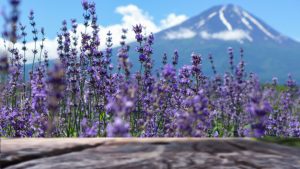
Sweet Basil
Sweet basil is one of those heavily perfumed herbs you will recognize in almost all Mediterranean cooking. It seems to go with pasta dishes like almost no other herb! From classic red sauce to homemade pesto dishes, it’s my favorite herb to cook with.
In addition to pasta, it adds a fantastic flavor to salads! You can slice the leaves into thin ribbons (a technique called chiffonade) and toss them right into the salad bowl. Or, you can make Sweet Basil Vinegar and use this to make a savory and flavor-filled vinegarette.
Finally, you can press the leaves, extract the oils, and use the oil to treat your scalp to a stimulating massage.
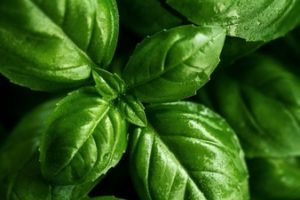
Rosemary
Rosemary is a fantastic herb because it is an evergreen. In a milder climate, like here in North Carolina, I grow and use it all year long. I grow it in a pot and bring it inside during the very coldest months of January and February. While it can withstand the cold, I cannot. Therefore, I like to keep it indoors to use it!
Besides whipping up culinary goodness with rosemary, you can use the stems to garnish spicy cocktails, like a Bloody Mary, to give them extra panache when serving.
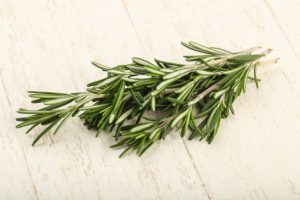
Cilantro
You may have noticed that many recipes that I share have a zesty Mexican tang. I definitely have a preference for Mexican flavors. The odd thing is, this is a fairly recent taste I’ve developed. Therefore, I have been growing cilantro for the last several years.
Cilantro has a bright and almost citrus flavor that balances out those tangy Mexican spices to perfection. I use it in my fajita marinade and also love making cilantro-lime rice as a side dish. Yum!
Coriander
Coriander makes the list because Cilantro made the list. You see, they are one in the same plant. However, they are different in both flavor and how you should use them.
Cilantro comes from the edible leaves and stem of this herb and the essential oils inside give it that easily identifiable light citrus aroma. On the other hand, coriander comes from the seeds of the plant and has a complex warm and nutty flavor. Grind up the seeds to make amazing curry, spice rubs, and marinades for meats or garden-fresh vegetables.
Parsley
There is almost no easier herb to grow than parsley. From the flat-leaf to the curly variety, it’s a definite must-have for your herb garden. While some herbs are known to be best suited for a particular “style” of cooking, parsley seems to be a “universal” herb. From mashed into Irish red potatoes to spicy Moroccan cuisine, it seems to be a global favorite.
In addition to cooking, you can chew on a sprig of parsley after your meal to freshen up your breath.
Chives
Chives make the cut because they are a cold-tolerant perennial that is so easy. So, you will have your plants for years to come. They will thrive in a container or in the ground. They grow quickly. Therefore, once you snip them to harvest, they will start to re-grow in just a few days.
Chives are best-known for their delicate onion flavor. It adds deliciousness to even the blandest of dishes with just a tiny taste. Whether you are cooking up soups, pasta dishes, or meats, toss in some chives. And, use them raw to garnish.
Don’t skip planting chives!
Catnip
Ok, the other herbs on my list have all had legit culinary purposes. This one really does not, but it’s fun to plant.
If you have kitties, plant some catnip. There’s nothing funnier than watching kitty get rowdy after rolling around in the catnip patch. Don’t worry, it’s not making her high. In fact, to cats the essential oils inside this herb smell like cat pheromones. That’s why cats get wound up over the stuff. It’s a great way to let cats, especially indoor cats, get some exercise as they run around playing after sniffing up the catnip.

Spearmint
One very invasive perennial plant, which you almost cannot kill, is spearmint. Thus, plant this in a container unless you want it taking command of your entire garden!
Spearmint can be used to infuse water to make it tasty, make delicious fruit salads, or brew a hot herbal tea. Additionally, you can mix up a mean Mojito and enjoy cocktails on the deck all summer long!
Oregano
Finally, I come to oregano. You might have thought I was going to forget this herb. Nope! I love this herb. It’s a very versatile flavor for cooking all kinds of foods. In fact, I rarely cook anything where I don’t add oregano. While oregano is perhaps best-known as a Greek herb, it goes with virtually anything you can think of.
Aside from cooking purposes, you can extract the oils and apply them to your skin for a natural pest repellant or use the oil to treat skin conditions or dandruff.
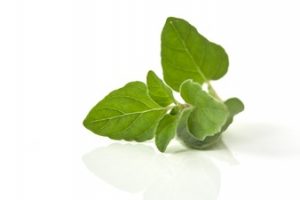
Treat yourself to planting an herb garden. You will be surprised at how easy herbs are to grow. You’ll have access to fresh and flavorful treasures to add to your recipes at home. And, you’ll enjoy sharing your bounty with neighbors and friends or preserving your own to save on your grocery bill this winter.
Please feel free to comment to share your favorite herbs…and why!

